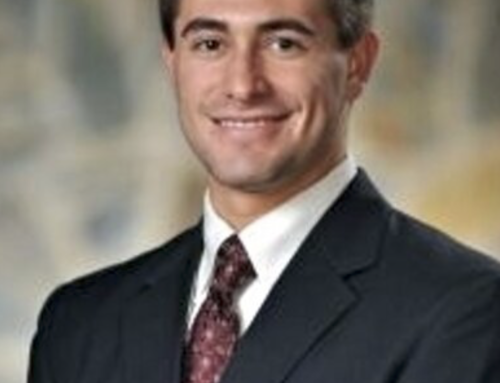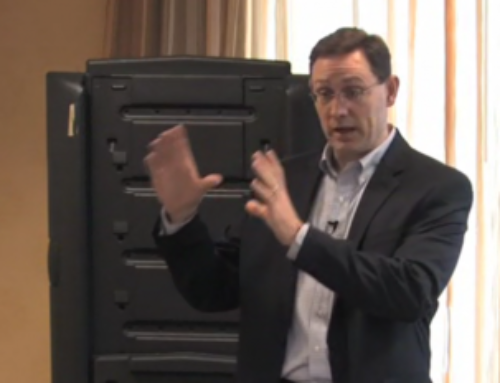Simple Improvements in Youth Shooting
By Dave Hopla, NBA Shooting Coach, DaveHopla.com
If you’re a coach of a youth, middle, high school, or even college team, your approach to teaching shooting should start with these thoughts. Let’s say you have a team of players and let’s say you have 10, 12, 15 guys or girls on your team, and you’ve got a wide array of shooting abilities. You might have one person working on the form piece, and you might have another shooter who is significantly better and more advanced form is much higher.
How do you go about working with one player who like you just mentioned may need more of the mental piece, the imagery piece or what not? Somebody else who may need more of the skill, the physical traits of shooting. How do you approach that when you’re working with multiple players at the same time?
- It’s really difficult to find a balance, especially as a youth coach, because you only have X amount of hours per week to work with kids – as well as your games so you’ve got to find an equal balance. What I always did with youth programs, was use a lot of competition drills with the kids. When we would do our form shooting we’d do a two minutes drill, and we’d see how many consecutive shots we can make, from two feet away. Whether you’re a good shooter or bad shooter, it all starts in close anyway, and by starting in close, hopefully they’d gain their confidence and everything. With the two minute drill, it’s really interesting, you can watch kids and I always tell kids, “Shots are made before they’re taken.” Say we did a two minute drill, within the first 30 seconds, we got seven in a row, now we have a minute and a half to beat seven in a row. You can see kids count, “Oh, he’s number six, he’s number seven. I’m number 8.” and they’re like, already shaken because they don’t want to have that pressure of shooting the ball and stuff. We would do little things like that to try to get them to be mentally prepared, trying to create barriers and everything.
Like I always say, just because something hasn’t been done before doesn’t mean it’s impossible. We set limitations on ourselves. Like I said, people would say: “How did you make so many shots in a row?” I said, “Just one shot at a time. I just repeat it 1,234 times.”
It’s tough with young kids. You’ve got one kid, maybe the 12th man on the team whose not very good and maybe just started playing basketball. It’s quiet tough to get kids to go out and put the time in on their own. If they do practice, the end up practicing the wrong way, they don’t know how to practice.
What gets me is – we have everything at our fingertips with the computer. You want a shooting clinic Google Ray Allen, Steph Curry, Diana Taurasi, Elena Delle Donne, Sue Bird, J. J. Redick, you can pull up videos on all those people and see how they shoot and you can take videos yourself and look nothing like that. I mean that’s why I just don’t understand it. Everyone wants instant success in society without realizing you have to put time in to master things. The thing is when you change a kid with his form, that doesn’t feel right. Well it’s like a new pair of shoes, that didn’t feel right either, you don’t throw them in a garbage right away, you break them in. But we want success so easily.
What are some of the first things, if you’re in that situation, and you’re limited on time working with your team; what should coaches trying do first thing? You talked about the form shooting, are there some specific things you like to look for in the form shooting?
Yes, like everything, I build a shot like I build a house. From the footwork up:
- My base gives me balance, my footwork is my foundation.
- My shot line which is my toe, knee, hip, elbow, wrist, shoulder, and basketball everything should be it in a straight line.
- Then going from there into the one-two step on a straight shot (I am still in alignment now once I start moving).
What I would do if I was coaching youth, I would have a program that I would want the kids to do and I’d chart my shots. You know when you chart your shots you see yourself getting better, you gain confidence, confidence leads to success, it’s an ongoing cycle.
I see kids when they miss a shot they get all mad. I said, “Why are you mad? You never practice?” It’s like me trying to go up and hit a baseball. I haven’t played baseball since I was in the eighth grade. I struck out and I threw the helmet up in the air and why would I expect to hit it? I haven’t done it in a hundred years…
If I was coach, I’d put a program together for kids, tweak it for the kids that are very good, maybe certain kids need to work more often to dribble as opposed to catch and shoot, and vice-versa with others. You have got to spoon feed these kids, they’re not going to do things on their own. You got to like lay it down, like baby steps with them. When I was a kid, I went out and I did it. I watched Herb Magee, Hank Slider, and George Lehmann speak and it’s before I had videotapes and all that. I had to study them and emulate them and go out, completely retool, restructure my shot without the use of a video. I had to pay attention to detail, every minute detail.
If you’re giving advice to youth coaches (8,9,10 year old, etc), are there certain rules you follow? Do you like to see the hoop at certain height? Do you like to see a smaller youth size basketball versus a 29-5 or 28-5 depending on, male or female, are there certain ages or size of kid? How do you go about that when you’re working with real young players?
That’s the problem in this country, It’s not uniform. I mean certain play with an eight-foot hoop, others play on a 10-foot hoop. If the kid is good at 10ft, and he can reach the basket then he can move up and play at a 10ft hoop. There’s nothing worse than watch a youth game and the kid dribbles with his head down most of the time, with his strong hand and if that line wasn’t down there on the base line, he would keep dribbling for another five miles.
You watch the youth game: my daughter played when she was 10, she had one girl on their team that could reach the basket. My daughter didn’t play, she’s played the year and she didn’t want to play anymore. Now she’s 12 and she can reach the basket, she’s back playing. They’re playing on a 10-foot hoop, as 10-year-old girls, you shoot at the same basket Lebron James is…Especially with the young kids, they run right out to the three-point line. They almost have a hernia trying to reach the basket.
Coaches and parents should use form as the gauge for when they’re ready to move back from the basket, or up in basket height. You know, Steph Curry’s dad did not let them shoot out beyond the free throw line until they got to high school. He made sure they were going to learn proper form first. They’re not going out to the three-point line. They get out to the free throw line, the 8 to 10 feet but they’re not shooting any threes until they perfect it.
Once players start to develop that foundational form, with the footwork, with the elbow, with the wrist, at what point and how do you start to progress them into shooting on the move and then off of the dribble and then more and more game-like situations. Do you have a program or a progression you like to go through? Or do you do it on a situational basis, or how do you approach that?
I’m a big stickler with the good form shooting and in particular the balance hand: Balance hand, is the shooting hand that adds the balance. I don’t call it a guide hand because it doesn’t guide the ball into the basket. The way most people shoot, they should call it a misguide hand. I mean it’s job is to balance.
After I’m done with that, then I want to shoot game shots to gain speed. If the kids are having problems, we’ve got to slow it down – which is very difficult to do (if you’ve got multiple players) because you have got kids that need extra work, and kids don’t. You got to make shots not excuses and you can’t slow it down for everyone else.
*If you’ve got three kids that are really bad, you got nine that are really good, you got to get them extra help then, put them with an assistant coach or something if they are having trouble. You can’t hold up the development of the other nine just because of three kids and the three kids are probably kids that don’t play much.
We have the same thing in the pro level, you’ve got guys that come in early, stay late and till they get it and we show them a lot of video tape especially that’s the way kids learn nowadays. Videotape the kids, say look, “This is good, this was really good. What did you do different on that one?” I would just say, “Look at what did you do bad…” I don’t want to use any negative terms. Like, “This is great, look at how, this was super. Now what did you do different on that one?” He’s not getting any negative feedback and he’s going to correct himself.
For more information on Coach Dave Hopla, make sure to check him out:
www.davehopla.com
www.twitter.com/davehopla







Leave A Comment